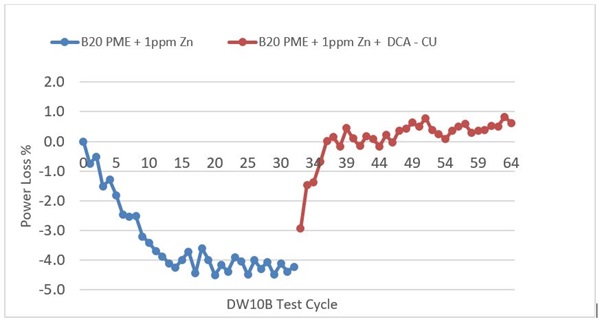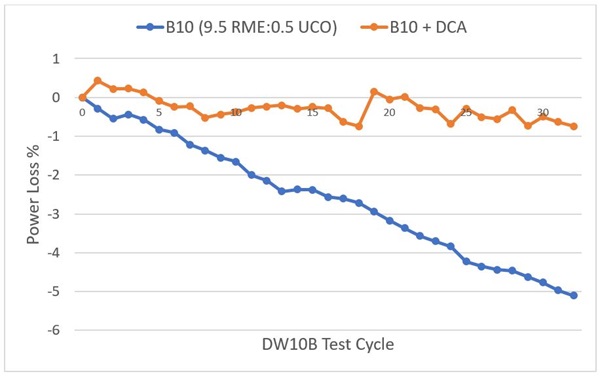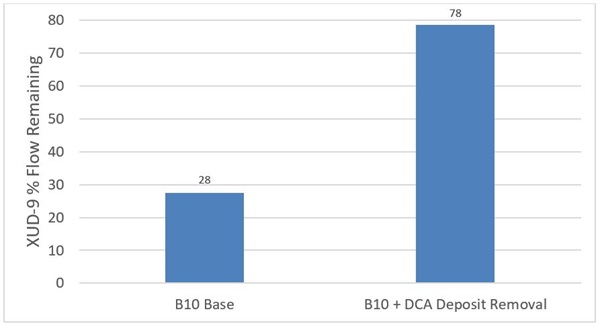Consumption of biodiesels, also known as fatty acid methyl esters (FAMEs), continues to grow around the world. Figures reported in the BP Statistical Review of World Energy 2020 show year-on-year growth for nine out of the last ten years, with a 45% increase between 2015 and 2019 alone. While more than 90% of today’s demand comes from Asia Pacific, Europe, the USA and Brazil, nearly all regions around the world report some level of demand for biodiesel.
While debate continues around the use of biodiesel in fuels, its growing use can enable countries to utilize their own natural resources and decrease reliance on imported traditional diesel fuel and, at the same time, potentially significant reductions in nationwide emissions can be achieved. The renewable components used in biodiesel fuel are many, and becoming even more varied:
- In South East Asia, the use of palm oil is increasingly the primary renewable component
- In Europe, it is mainly rapeseed
- In the USA and Brazil, soybeans have traditionally been used
- Used cooking oil is also common as a source
- There are also a variety of alternative options being investigated including algae, cotton, fallow and sunflower
This diversification is beneficial, allowing biodiesels to be blended using a variety of sources. It also allows utilization of renewable materials from individual regions or countries, reducing the cost of transporting the fuel.
Impact of Biodiesel in Fuels
The increase in both renewable material sources and allowable renewable content—up to 20% (B20) in certain regions—is creating challenges for the vehicle hardware and in turn the fuel marketer.
It has been shown that a greater renewable component in biodiesel can increase deposits within vehicle fueling systems, reduce oxidative stability and also lead to fuel filter blocking. Here we focus on the deposit build-up in diesel fuel injection systems.
Left untreated, deposit build-up in diesel fuel injection systems can lead to a range of engine and vehicle performance issues, including engine power loss, reduced fuel economy, increased emissions, impaired vehicle drivability and greater maintenance costs throughout the lifetime of the vehicle.
The deposit control additive (DCA) is the most important ingredient in multifunctional diesel additives and is primarily designed to prevent and remove deposits within vehicle fueling systems, helping minimize the performance issues highlighted above. DCAs work by both preventing and removing deposits from metal surfaces they come into contact with. For deposit prevention, the DCA works by solubilizing deposit precursors, thus stopping potential deposits from forming. In doing so, it protects the metal surfaces, notably the fuel injector, that the deposits might otherwise have come into contact with. For removal, the DCA adsorbs onto deposits already attached to metal surfaces and carries them away.
Testing Using Biodiesel
Using the industry standard CEC F-98-08 DW10B method, a comprehensive range of stringent testing has been conducted to determine how biodiesel components impact nozzle coking in modern direct injection engines.
B20 fuel test with PME
It is critical to provide protection against injector deposits across a range of biodiesel sources. As mentioned, the use of palm oil methyl ester (PME) is continuing to increase: 20% PME blend levels are becoming increasingly common in some South East Asian markets.
Using the DW10B test, a B20 PME base fuel resulted in a final power loss of over 4%. Operating the same fouled injector set but now using the same base fuel plus a ‘deposit prevention’ treatment level of high performance DCA resulted in complete restoration of lost power within six one-hour test cycles.

B10 fuel test with RME
Again using the DW10B test, a B10 fuel containing 9.5% rapeseed methyl ester (RME) and 0.5% of a highly pro-fouling used cooking oil methyl ester (UCOME) component showed over 5% power loss without the presence of trace zinc, which is normally added to induce fouling. Testing the same fuel with a ‘deposit removal’ treat of a highly effective diesel DCA resulted in less than 1% power loss.
The ability to remove biodiesel induced deposits from fuel injectors through effective DCA treatment was also demonstrated using the conventional CEC F-23-01 XUD-9 test method in a two-test 'deposit build up - deposit removal’ procedure. Although no trace zinc is used in this test, pre-existing fuel injector deposits created in base fuel testing can be very difficult to remove and a highly effective deposit control additive is required to show high levels of ‘deposit prevention’. The XUD-9 method used in this deposit build up – removal procedure therefore offers a valuable cross check for the DW10B. Operating the standard XUD-9 method showed an average loss of fuel injector flow of 72%, or in other words 28% flow remaining. Using the same fouled fuel injector set running on the same B10 plus a deposit removal treat of DCA resulted in a significant 70% restoration of lost injector flow.
Our View
The global demand for biodiesel in fuels continues to grow. In the drive for greater fuel efficiency and reduced emissions, fuel injectors have become more susceptible to a wider spectrum of diesel deposits, including those derived through the use of biodiesel.
Not all deposit control additives are able to provide the necessary levels of protection against FAME-induced deposits, so high-performing additives with proven credentials to deliver superior injector cleanliness, and with enhanced deposit and power loss performance, are recommended.
To learn more about advanced diesel fuel additive solutions, please contact your Lubrizol representative.











